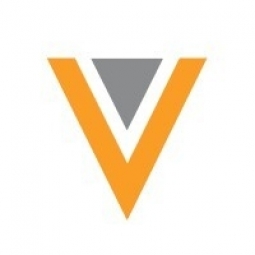技术
- 功能应用 - 企业资源规划系统 (ERP)
适用行业
- 药品
关于客户
罗氏是一家大型生物制药公司,总部位于瑞士巴塞尔。该公司是制药和诊断领域的全球领导者,致力于推进科学进步以改善人们的生活。罗氏是全球最大的生物技术公司,在肿瘤学、免疫学、传染病、眼科和中枢神经系统疾病领域拥有真正的差异化药物。罗氏还是体外诊断和基于组织的癌症诊断领域的世界领先者,也是糖尿病管理领域的领跑者。该公司的全球到本地内容战略是其向世界各地的患者和客户提供个性化内容和一致的品牌体验的关键部分。
挑战
罗氏是一家总部位于瑞士巴塞尔的大型生物制药公司,面临着平衡全球内容战略与当地需求的挑战。该公司认识到制定全球到本地战略的必要性有几个原因。首先,该公司希望重用内容以限制重复工作和成本。其次,全球到本地的方法被认为对于建立模块化内容模型至关重要。第三,该战略将有助于提供个性化内容和一致的品牌体验的框架。该公司希望确保患者和客户无论身在何处都能获得相同的品牌体验。最后,运营效率是一个优先事项,全球到本地的蓝图被视为一种比与外部业务合作伙伴更容易在内部管理和推动变革的方式。
解决方案
罗氏的解决方案是设计一个平衡当地市场自主权的全球内容运营策略。该公司意识到需要避免采用自上而下的方法,并认识到这种叙述不会引起很好的共鸣。在某些情况下,全球举措由公司主导,但在其他情况下,美国、法国和德国等较大的附属公司则带头。该公司还寻求影响更多自治实体的最佳实践,提供有关最佳实践的指南和教育。为了衡量成功,该公司定义了关键绩效指标 (KPI),例如将内容重用率提高一定比例或减少 MLR 周期时间。该公司还使用 Veeva Pulse Content Metrics 将其性能与业内其他公司进行比较。
运营影响
数量效益

Case Study missing?
Start adding your own!
Register with your work email and create a new case study profile for your business.
相关案例.

Case Study
Case Study: Pfizer
Pfizer’s high-performance computing software and systems for worldwide research and development support large-scale data analysis, research projects, clinical analytics, and modeling. Pfizer’s computing services are used across the spectrum of research and development efforts, from the deep biological understanding of disease to the design of safe, efficacious therapeutic agents.

Case Study
Fusion Middleware Integration on Cloud for Pharma Major
Customer wanted a real-time, seamless, cloud based integration between the existing on premise and cloud based application using SOA technology on Oracle Fusion Middleware Platform, a Contingent Worker Solution to collect, track, manage and report information for on-boarding, maintenance and off-boarding of contingent workers using a streamlined and Integrated business process, and streamlining of integration to the back-end systems and multiple SaaS applications.

Case Study
Process Control System Support
In many automated production facilities, changes are made to SIMATIC PCS 7 projects on a daily basis, with individual processes often optimised by multiple workers due to shift changes. Documentation is key here, as this keeps workers informed about why a change was made. Furthermore, SIMATIC PCS 7 installations are generally used in locations where documentation is required for audits and certification. The ability to track changes between two software projects is not only an invaluable aid during shift changes, but also when searching for errors or optimising a PCS 7 installation. Every change made to the system is labour-intensive and time-consuming. Moreover, there is also the risk that errors may occur. If a change is saved in the project, then the old version is lost unless a backup copy was created in advance. If no backup was created, it will no longer be possible to return to the previous state if and when programming errors occur. Each backup denotes a version used by the SIMATIC PCS 7 system to operate an installation. To correctly interpret a version, information is required on WHO changed WHAT, WHERE, WHEN and WHY: - Who created the version/who is responsible for the version? - Who released the version? - What was changed in the version i.e. in which block or module of the SIMATIC PCS 7 installation were the changes made? - When was the version created? Is this the latest version or is there a more recent version? - Why were the changes made to the version? If they are part of a regular maintenance cycle, then is the aim to fix an error or to improve production processes? - Is this particular version also the version currently being used in production? The fact that SIMATIC PCS 7 projects use extremely large quantities of data complicates the situation even further, and it can take a long time to load and save information as a result. Without a sustainable strategy for operating a SIMATIC PCS 7 installation, searching for the right software version can become extremely time-consuming and the installation may run inefficiently as a result.

Case Study
ELI LILLY ADOPTS MICROMEDIA’S ALERT NOTIFICATION SYSTEM
Pharmaceutical production is subject to a strict set of enforced rules that must be adhered to and compliance to these standards is critically necessary. Due to the efforts of WIN 911’s strategic partner Micromedia, Lilly was able to adopt an alarm notification infrastructure that integrated smoothly with their existing workflows and emergency hardware and protocols. These raw energy sources enable the industrial process to function: electricity, WIN-911 Software | 4020 South Industrial Drive, Suite 120 | Austin, TX 78744 USA industrial steam, iced water, air mixtures of varying quality. Refrigeration towers, boilers and wastewater are monitored by ALERT. Eli Lilly identified 15000 potential variables, but limitations compelled them to chisel the variable list down to 300. This allowed all major alarms to be covered including pressure, discharge, quantity of waste water discharged,temperature, carbon dioxide content, oxygen & sulphur content, and the water’s pH.









